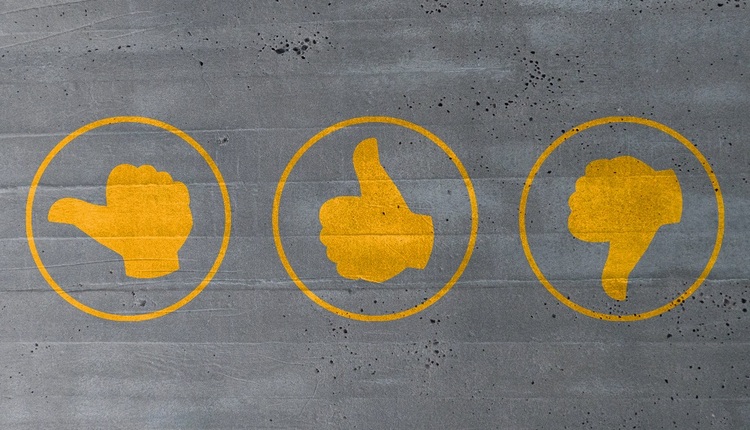However, general guidelines for sustainability enforced by most governments state that sustainability does not aim at reducing business. The various directives do their best to stay true to this, either by preferring incentives to laws or by providing long timeframes to enable technologies and organizations to adapt. For example, the EPAs Strategic Plan for 2006 to 2011 states the necessity of accelerating the pace of environmental protection while maintaining the
A European directive from 1994 on packaging and packing waste states its resolution to reduce packaging waste while stressing the importance of retaining fluid business activity. This directive aims to harmonize national measures concerning the management of packaging and packaging waste in order, on the one hand, to
prevent any impact thereof on the environment of all Member States as well as of third countries or to reduce such impact, thus providing a high level of environmental protection, and, on the other hand, to ensure the functioning of the internal market and to avoid obstacles to trade and distortion and restriction of competition within the Community, says the first article of the European Community Directive 94/62/EC.
However, if incentives and regulations do their best to preserve trade, constraints exist today, and sustainability has become a specification for retailers when it comes to packaging decisions. American communities with Pay-As-You-Throw (PAYT) programs give a strong incentive to reduce waste volume by charging residents in those communities for how much trash they produce. Most communities with PAYT charge residents a fee for each bag or can of waste they generate. In a small number of communities, residents are billed based on the weight of their trash. Either way, these programs are simple and fair. The less individuals throw away, the less they pay, says EPAs website.
94/62/EC requests to simplify waste recycling by way of simplifying packaging. It asks that packages be designed, produced and marketed to allow and encourage reuse or recycling.
When the general concern and the regulations are important enough, corporations enter the game and accelerate the sustainability process, the case in point being the Wal-Mart example. Wal-Mart anticipated the trend for sustainability and optimized package-to-product ratios with its November 2006 announcement of implementing a packaging scorecard.
On the other hand, corporations also accelerate the sustainability process when non-sustainable methods become too expensive, such as non-optimized transportation that burns excessive amounts of fuel, and consequently, leads to fuel surcharges. Currently, express carriers
focus on the Dim factor. Dim weighing consists in basing the transport rate on the highest of the two values between a parcels actual weight and its dimensional weight. If Dim Weight exceeds the actual weight, charge is assessed based on Dim Weight. What used to be the air freight dimweighting procedure for rating shipping costs is now applied to ground transport for parcels. The Postal Regulatory Commission reported that UPS was to apply Dim weighting to ground parcels exceeding three cubic feet instead of its oversize rate starting January 1, and competitors DHL and FedEx were to follow suit starting January 1 and February 5, respectively.
Sustainability has found a friend in the business with fossil fuel price increases. An additional fuel surcharge is standard procedure in the transport business, where transport companies will invoice a client for more than the quoted price to account for uncontrollable fuel price increases. These surcharges vary greatly between transport companies and averaged as much as 20% of transport bills in 2006 according to the November 2006 issue of Logistics Management. Diesel prices have been increasing 20% each year since 2001, and that will force retailers and transporters to review their packaging solutions.
The price of plastic material is also increasing. The price per pound for polyethylene (a plastic film used in packaging) has nearly doubled since 2002 from 29 in January 2002 to 54 in January of this year and the trend appears to be higher, at least in the short term, according to Michael Greenberg, CEO of The Plastics Exchange in Chicago. In primary packaging such as blisters, plastic is generally not seen as a material harmful to the environment, for alternative methods can often be worse. For example, glass is heavier and requires more energy to produce and transport than plastic does. In order fulfillment, however, plastic has always been an easy choice for cushioning articles in shipping cases as it requires little investment and design effort. But with rising prices, packaging methods relying on plastic can become too expensive for packaging companies to handle.
At the end of the pipeline, shipping case wastes are also a business concern for retailers. Shipping cases are out of retailers' control after delivery. Packaging cases that do not meet the up-to-date enhancements for sustainability, such as not being suitable for reuse or recycling, may create concerns for waste processing in shops, households or communities.
Pay-As-You-Throw (PAYT) statistics reflect the program's effectiveness in several communities. Studies also indicate that people begin to change their behavior towards waste prevention... such as looking for products with reduced packaging so that they have less waste to discard at their households, says Janice Canterbury, EPA Office of Solid Wastes.
Though sustainability in packaging is subject to growing specifications, it can be turned into a profit-making strategy. Retailers ready to make the sustainability move can reduce freight costs by optimizing the package-to-product ratio and by selecting the best-suited carrier for transport. A simple calculation, taking the Dim Factor into account, can quickly show the advantages to reducing the package-to-product ratio.
The current Dim Factor for ground transportation in the US is 194. It was 250 in 1996. As an example, the price base for a 20 x 10 x 12, 10-pound case would be 10 pounds with a Dim Factor of 250, and 12.9 pounds with a Dim factor of 194, which is a 29% increase from what it would have been about 10 years ago.
Selecting an express carrier with the most competitive rate is
always wise, but choosing one that uses an automated shipping line will make the shipping stage easier. An automated line that can perform in-line measurements, shipping cost calculation, manifesting and tracking keeps those operations under one proverbial roof.
Besides transport cost, a single-material protective shipping case reduces packaging cost and simplifies the sourcing. Void fill material averages 20 to 40 per shipping case and makes the case bimaterial when the void fill is plastic. On the other hand, most single-material packaging solutions have been designed as automated processes that produce packaging using optimized material quantities, thus reducing the cost of packaging. Besides, single-material sourcing enables the optimization of purchase contracts and the better evaluation of the return on investments. As a matter of fact, packaging solutions that meet sustainability requirements reduce material, operations and transport costs.
Social sustainability exists in retail packaging too, and any enhancement that better meets the consumers' expectations for transport, opening and discarding the package is a winning marketing strategy. Customers, whether in shops or at home, expect to have confidence in the packaging. They prefer to handle smaller, visually appealing packages that don't require a cutter to open. They prefer to flatten the packaging when empty, discard the wastes straight, and they want to reuse the original packaging for returns if necessary. When these specifications are met, the packaging selected for distribution enhances the brand image while meeting sustainability requirements.
Shipping cases must be protective because logistics have accelerated following the current requirements for retail order distribution. B2C distribution exists for many products, and next-day delivery is proposed to customers, thus, a low damage ratio is required.
To meet these requirements, order fulfillment and packaging become automated in distribution centers; sorting and transport are outsourced in multiple steps; and most shipments are cross-docked at least once. As a consequence, shipping cases must support more shocks, vibrations or compressions.
While primary packaging has already come a long way for maintaining sustainability by optimizing of existing materials, processes and logistics organization for the order-fulfillment business, companies still have improvements to make. On the other end of the line, while consumers now accept the importance of environmentally sound primary packing, these same consumers' expectations for logistics such as over-packing, next-day delivery and convenient return policies can mean that businesses are making decisions for materials, processes and logistics that do not uphold sustainability. Therefore, to stay competitive, designers and suppliers for the order-fulfillment business will need to remember to include sustainability in packaging in their specifications before it becomes an issue of general concern.
Bernard Dominici is the North American Sales Manager for B+ Equipment. Contact him at 616-334-5625 or b.dominici@bplus-equip.fr.










